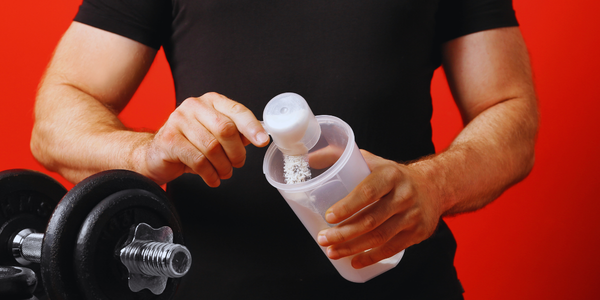Stop Doing Cardio If You Want to Lose Weight
Cardio can improve endurance and heart health, but as a standalone fat-loss strategy, it’s inefficient, unsustainable, and often counterproductive.

If you’re a guy in your late 20s, 30s, or even 40s, odds are you’ve tried the cardio-first approach to weight loss. You lace up, clock miles on the treadmill, pound the pavement, and sweat buckets on the bike. The logic feels airtight: burn more calories, lose more fat.
But after months of logging steady cardio, the results are frustrating at best: the scale barely budges, your waistline doesn’t shrink, and in some cases, you even gain weight. Sound familiar?
Here’s the uncomfortable truth: cardio might not just be ineffective for fat loss—it could be holding you back.
Science is finally catching up to what strength coaches have known for years: when it comes to losing fat, looking lean, and keeping the results, lifting weights beats cardio—hands down.
Why Cardio Feels Right But Fails in Reality
On paper, cardio seems like the fat-loss holy grail. Run five miles and burn 600 calories, right? But your body isn’t a calculator. It’s an adaptive machine designed for survival. And that means it fights back.
Hunger Hormones Strike Back
Ever notice how crushing a long run leaves you ravenous? That’s ghrelin—your hunger hormone—spiking. Research shows that cardio, especially longer sessions, ramps up appetite, making it far too easy to eat back every calorie you burned.
A meta-analysis published in the Journal of Obesity found that cardio-only weight loss programs lead to an average fat loss of less than 0.5 pounds over eight weeks. That’s a brutal return on investment.
NEAT: Your Secret Saboteur
Then there’s NEAT—non-exercise activity thermogenesis. That’s the fidgeting, walking, standing, and everyday movement you do outside of workouts. Cardio often kills it. After a draining 60-minute spin class, you unconsciously move less the rest of the day. Your body saves energy to balance things out.
The Efficiency Trap
The fitter you get at running, the less fuel you burn. Your body adapts to repeated cardio like it’s training for survival. Over time, the exact same workout burns fewer calories—a phenomenon called metabolic adaptation.
Injuries and Burnout
Even if you push through, cardio is hard to sustain. High volumes of repetitive movement crank up your risk of shin splints, stress fractures, and joint pain. And let’s be honest—few of us have time (or motivation) to log 6–8 hours of cardio a week for minimal fat loss.
Bottom line: cardio can improve endurance and heart health, but as a standalone fat-loss strategy, it’s inefficient, unsustainable, and often counterproductive.
Why Strength Training Wins
Swap the treadmill for the barbell, and your body responds in ways cardio can’t touch.
The Afterburn Effect (EPOC)
Weightlifting isn’t just about what you burn in the gym—it’s what you burn after. Resistance training creates excess post-exercise oxygen consumption (EPOC), also called the “afterburn effect.”
Studies show heavy resistance training increases calorie burn by 6–15% for up to 48 hours after a workout. Compare that to cardio, where calorie burn stops almost the second you step off the treadmill.
Muscle = Your Metabolic Furnace
Every pound of muscle you add burns 6–10 times more calories at rest than fat tissue. Build muscle, and you literally raise your 24/7 calorie burn—even while sleeping or sitting at your desk.
One study found that just 10 weeks of resistance training increased resting metabolic rate by 7%. That may sound small, but compounded over months and years, it’s the difference between staying lean and slowly creeping back into weight gain.
Hormonal Edge
Strength training spikes testosterone and growth hormone—two critical hormones for fat loss and muscle retention. In contrast, excessive cardio is linked to elevated cortisol, a stress hormone that promotes belly fat storage.
Better Body Composition
Cardio might make the scale move slightly, but it doesn’t discriminate. You lose fat and muscle, which slows your metabolism long-term. Strength training? You shed fat while preserving—and often adding—muscle. That’s how you get lean, not skinny-fat.
The Science Is Clear—Weights First
In 2025, researchers studying obese men compared two groups: one did cardio first, the other lifted weights first. The results? Stunning.
- The weights-first group lost significantly more visceral fat—the dangerous fat around organs that drives disease risk.
- They gained lean muscle at the same time.
- They even took 3,500 more steps daily compared to just 1,600 in the cardio-first group, showing strength training improved overall energy, not just gym performance.
The mechanism is powerful. Lifting first depletes muscle glycogen (stored carbs). When you tack cardio on afterward, your body is forced to burn fat as its primary fuel source.
Translation: lift first, burn fat longer.
The Molecular Game-Changer
Here’s where it gets wild.
A groundbreaking study out of the University of Kentucky found that strength training triggers the release of extracellular vesicles—tiny particles released from muscle that act like text messages to your fat cells.
The message? “Break down. Release energy.”
This isn’t just about burning calories. It’s about literally reprogramming your fat tissue to mobilize and burn. Over time, this creates lasting metabolic advantages cardio can’t replicate.
How to Transition From Cardio to Strength
If you’ve been cardio-locked for years, here’s your no-BS roadmap:
- Lift 3–4 Days a Week
- Focus on compound lifts: squats, deadlifts, bench presses, pull-ups, and rows.
- Keep reps in the 6–12 range for muscle growth and metabolic impact.
- Add Short Bursts of Cardio
- 1–2 weekly sessions of HIIT or sprints. Ten minutes of intervals beats an hour of steady-state.
- Or use cardio as active recovery—bike rides, hikes, brisk walks.
- Dial in Nutrition
- Remember: 70–80% of fat loss is diet. Track protein (aim for 0.8–1g per pound of bodyweight), control calories, and prioritize whole foods.
- Track the Right Metrics
- Ditch the scale obsession. Measure waist circumference, strength numbers, and progress photos. These tell the real story.
- Start Small If You’re Intimidated
- Machines and bodyweight exercises (push-ups, dumbbell presses, step-ups) are fine starting points. The key is progression.
Addressing Objections
- “But cardio burns more calories in a workout!”
True—but strength training creates a bigger 24/7 burn through EPOC and muscle gain. - “I actually enjoy cardio.”
Great. Keep it in the mix for heart health and enjoyment. Just don’t make it the cornerstone of your fat-loss plan. - “Weights are intimidating.”
Every pro started as a beginner. Start simple, build confidence, and progress gradually. - “What about my heart health?”
Cardio is excellent for cardiovascular fitness. But even here, research shows strength training reduces blood pressure, improves circulation, and protects long-term heart health.
Conclusion: Stop Running in Circles
If you’ve been chasing fat loss through endless cardio, it’s time to face the evidence. Cardio alone won’t get you the lean, muscular body you’re after.
Strength training, on the other hand, gives you the triple threat:
- More calories burned long after you leave the gym.
- Muscle that supercharges your metabolism.
- Hormonal and cellular changes that make fat loss stick.
ActiveMan — Make Your Move
The Modern Guide to Men’s Health, Fitness & Lifestyle.





